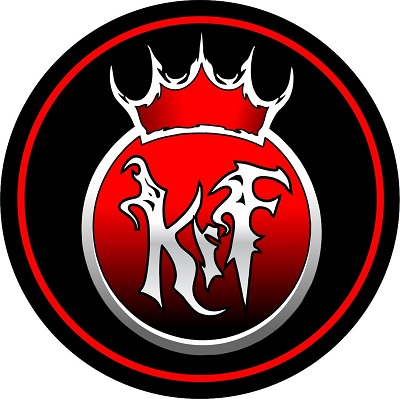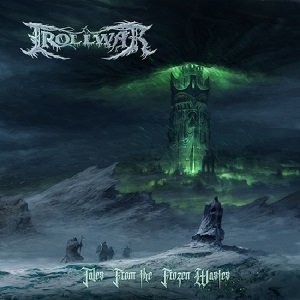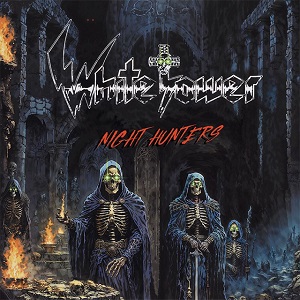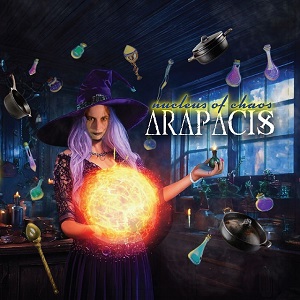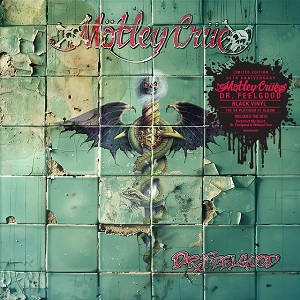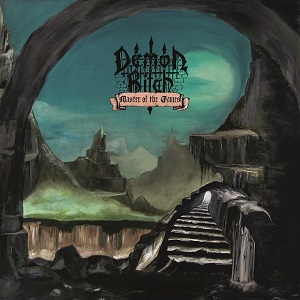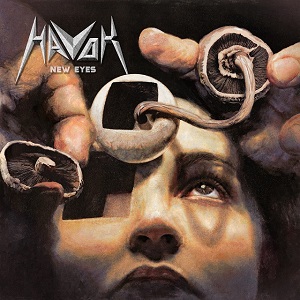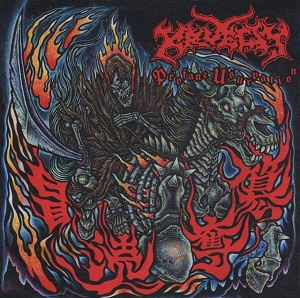Director CHRISTIAN LAMB On MÖTLEY CRÜE The End – “We Had To Show This”
June 10, 2016, 8 years ago
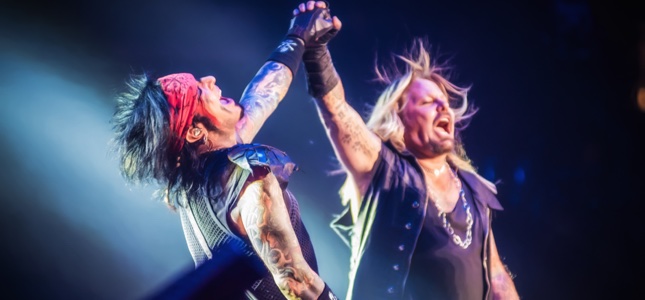
On December 28th, 30th, and 31st, 2015 at The Staples Center in Los Angeles, California, Mötley Crüe performed their final three concerts, ever. There will never be another live show featuring Vince Neil, Nikki Sixx, Mick Mars, and Tommy Lee all on stage at the same time. Given the obvious historical significance, The Crüe enlisted director Christian Lamb to capture the festivities as they happened – frame by frame.
Mark June 14th on your calendars as Mötley Crüe The End will be screened in select cinemas across The United States – for one night only – presented by Fathom Events, Live Alliance, Eagle Rock Entertainment and Tenth Street Entertainment.
Speaking exclusively with BraveWords.com, Mötley Crüe The End director Christian Lamb shares how this fantastic film came to fruition. “Mötley Crüe gave me a call, flew me out to Minneapolis. We sat down – management, producers, Nikki and Tommy were in the room. It was great. It was one of those round-table discussions where we were going back and forth on what the band was looking for, and what I was looking to do. We were throwing film references back and forth, documentaries that we liked; things that really resonated with us. Through all of that, there was a general consensus that this is going to work. This is the avenue we want to go down. The priority was that it wasn’t going to be Behind The Music. Nikki and Tommy eluded to the fact that VH1, and other companies in the past, had done these documentaries that are really about rehashing the career of the band; going through all those old stories and reminiscing; focused only on nostalgia really. ”
“With this, we really wanted it to be present; it was monumental. The focus was this moment in time, and we approached it from that standpoint. That was really our take on it, and we were all in agreement. I didn’t want to redo something somebody had done in the past. I wanted to be current, and I wanted to see what their mindset was ending this; they’d been on tour for a year and a half. I thought it was important to really get into their heads as they make this transition, evolving into the next steps of their careers. None of them are going to stop making music; they all have their own projects independently. That, to me, was the most fascinating aspect of all of this. That’s what I’d essentially pitched in there. But we definitely had a connection immediately – Tommy, Nikki, and myself – as far as what we were doing and what this road was we were to follow.”
Read on as Mötley Crüe The End director Christian Lamb (pictured below) partakes in our Q&A session.
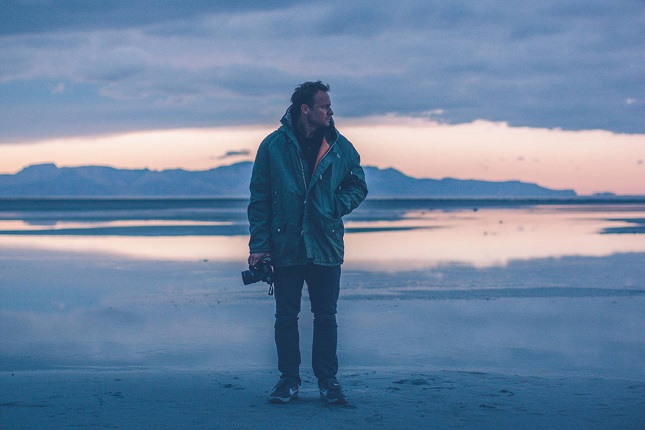
How many cameras did you have filming inside The Staples Center?
“We had 13 cameras for two nights (December 30th and 31st) at Staples. But I also had been in on December 28th with a couple of cameras to get much more of the documentary that I wanted. To me, the backbone is how the show comes together, and the people that make that happen. As much as fans focus on the artists, there’s the whole other aspect of any tour that I really wanted to capture. So I made sure we were in there for the very first opening of the doors – tipping of the trucks, from the carpenters building the stages, the lighting guys filling the trusses before they went up, the riggers dropping the points and doing the chalk; I wanted all of this captured. And the only way to get that was on that initial load-in on December 28th. Because they were doing three concerts at Staples; two of which I was filming. That load-in day was paramount to me. I wanted to make sure we hit the ground running. We had one chance to capture Staples Center load-in and that was it. Past that, when we got into the 30th and 31st, it was obviously a much bigger beast. When I’d seen the show in Minneapolis for the first time, I realized how much action was going on – from Nikki’s flame jet to Tommy flipping upside down, there’s so many extraordinary elements to the show.”
Is Mötley Crüe The End the entire New Year’s Eve show from start to finish, or did a bit of splicing occur between the concerts on the 30th and 31st?
“It’s a mix, we filmed two nights. The 31st is absolutely the foundation of it. You see Vince’s countdown, you see Tommy getting stuck upside down in his drum coaster – which is inherently the 31st. But, to get the extra coverage, to get everything we needed to complete the full edit, we did splice in some of the 30th to make that happen. Really, it’s the only way. When we came into this project, we came in late. Staples Center was sold out. It was difficult to squeeze camera positions into anywhere in that arena, so the decision was made to film two nights. We worked really hard with Staples Center and with production management to find what we actually did get. Each band member is a focus unto themselves, and we didn’t want to be lacking in coverage with any of the four guys. I was really adamant about making sure there was equal weight.”
The editing process must have been an enormous ordeal – 13 cameras over two nights, plus the load-in footage.
“And I was getting more interviews from (director) Jeff Tremaine. Again, when we sat down in that room, I knew how overwhelming this project was going to be. I knew how many different facets we needed to cover. As we built this, and went through all the logistics of it, I saw this road map… and we needed some assistance. Jeff had done something in the past with the band… I figured, if he can give me some of the interviews with the guys… that can help bring everything in as one. When I sat down in the edit, that was taxing, but at the same time it was a labour of love. That’s where it comes together, obviously. If you don’t devote yourself to it in that time, you’re never going to get that morsel out of it that you were shooting for. That’s where the magic happens – in the edit. As much as we had phenomenal footage, the way that it’s cut together, and the way the story builds in and out of it, is critical. I was very hands on there. I used Sunset Edit in Hollywood, and Jonathan Covert was my lead editor. I had taken a break: I took ten days off after filming. I just needed to clear my head at that point. I needed to decompress. So I came back January 10th, he and I were in the edit seven days a week, at least twelve hours a day, for three weeks. I had two bays working simultaneously; the live bay with all the multi-cam, and all the documentary footage next door – interviews and B-roll. It was time consuming; we had four assistant editors just finding selects. Jonathan and I finally had the bed of the live show cut, I knew roughly where I wanted to take the musical breaks and put these partitions. We started to drop these in, and in the end we cobbled it all together.”
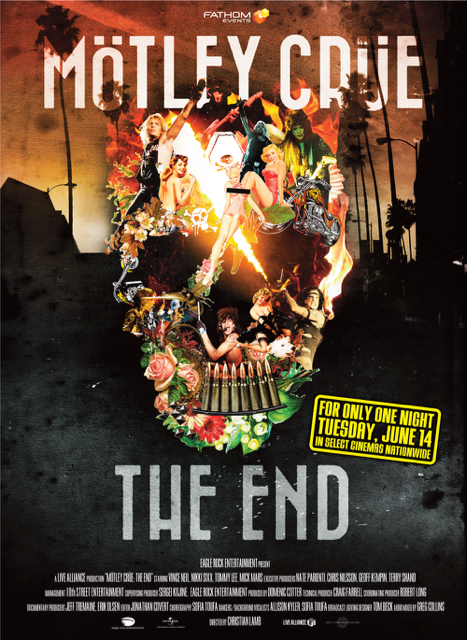
The interview footage – all filmed one on one – is remarkable. Some things the guys agree on, but when they’re talking about the first place they ever played, Tommy has a very different memory than the other three guys; making for an awesome segment.
“I’m glad you liked that. Actually, I fought for that. Tommy’s like, ‘I didn’t get it right man. I blew it.’ But it’s great because that was what? 1982? Who has this rock solid memory, especially considering what you guys were doing at the time; it’s amazing you remember any of it. I love the way they played off each other, and that was an editorial choice. It added a little bit of humour to it. Much of what they’re saying is poignant and really deep; I wanted a departure from that.”
When you get towards the latter part of the movie, Nikki reveals the ugly truth by saying, “We’re not enemies, but we’re not friends.” As a viewer, you experience the full gamut of emotions while watching Mötley Crüe The End.
“That’s really what I set out to do. I wanted you to feel something, because this was an iconic moment. There was only one chance to get this, and I realized the gravity of that when I set about filming. I paid special attention to the cinematography, but I paid equal attention to the story. I felt the responsibility of doing something of this nature because I realize what it’s going to mean to the fans. And to the band when they’re looking back on this in ten years; this is legacy. I poured myself into this in every way.”
Was there anything you wanted to film that was off limits?
“Well… yeah… again it was a timing thing. As much as I would love to have been with the band myself and gone through their daily lives and seen them outside of the show, I wanted to do that. Maybe it was selfish, just wanting to know them better and bring that to the screen. But in the end, was it vital to the story? Was that a critical component? Probably not; it was one of those things that I just let go. And we didn’t have the time for to really do that. When you approach somebody from that angle, you have them in their comfort zone and you can get more poignant interviews. But at the same time, the interview footage that we did acquire, we got the honesty, we got the emotion. Really that’s what I was after, but I thought it would take a little bit more to get there.”

During this whole experience, did anything surprise you?
“I think just how they operate as a band; that was fascinating and surprising. The fact that they are very isolated from one another, yet you can feel this brotherhood, this bloodline where they are deeply attached to one another. I found that dynamic intriguing, and very telling. When they’re up there, they give it their all; they lay it down on stage. Regardless of what happens as soon as they walk off stage, they’ve left something out there for the audience. That was something I wanted to focus on in the interviews and peel back that layer. I don’t want this to be a fluff piece; there’s so many of those out there – that becomes the norm. Just put these people on pedestals as flawless creations. But you know what? That’s not the way it is. There’s flawed relationships, there’s dysfunctional elements that go on. And these are the things that people want to see; this is what gives a story teeth and honesty.”
Speaking of honesty, when Tommy Lee’s drum coaster broke down mid-ride, you must have been losing your mind!
“Yeah, on so many levels. It was really difficult because it was December 31st – the very last show that Mötley Crüe is going to do together. We were in such a great groove, there was this energy that was permeating around the arena; it was phenomenal. Then, that happened. It kind of broke our stride in the moment. You realized how upset Tommy was, because Tommy takes a lot of pride in his coaster; it’s his creation. For that to happen, it was a kick in the teeth. But then we got into Mick’s solo and it started to flow again. It was difficult in figuring out how to tell that story. The initial response from management and band was, ‘We filmed it on the 30th and it worked perfectly. That’s what we have to use.’ But the more I looked into it, I started to go online and look on Twitter and Instagram… Google stories through Huffington Post and all these other publications. Everybody really latched onto this; it became a story unto itself. So, the more I thought about it, we had to show this; this was rock n’ roll. Things go wrong. We need to be able to tell the story in the right way. I had to talk to Tommy about it, and I told him the same. If we don’t show this, we come off looking disingenuous. The story’s out there, everybody knows about it. I think it’s imperative – not that we hang on the moment – but we definitely shine some light on what happened. There’s 20,000 fans there that saw it live. We have to show this! And once I showed Tommy a rough cut, the proof’s in the pudding ultimately. I had to show him the idea visually, and once he saw that he’s like, ‘You’re right, go with it.’ That’s how we got that scene into the film.”
When will Mötley Crüe The End be released on DVD and Blu-Ray? And will it include any extras not seen in the movie theatre?
“Right now, the initial plan is obviously this theatrical release – that’s the big push. Beyond that, there is talk of a Blu-Ray / DVD, some kind of download. I’m not sure of the specifics of it. Whether I go back in the editing bay and attach more extras – which we have more footage – I don’t know. That’s a decision to be made once we’re looking at the DVD and Blu-Ray release. Personally, I would like to.”
The other Mötley Crüe movie – the adaptation of The Dirt – has been in various states of progress for years. Are you – or would you like to – be involved with that?
“I’ve loosely watched this story thread – there’s been multiple directors attached to it, revisions in scripts and everything else. I’m not involved at this point, but it’s definitely an interesting project. What’s unique about it is that it’s not an entire biographical piece after the fact. The band is still living and breathing, working and making music. It’s just a matter of how you tell that story. It’s different than doing The Doors movie, different than doing a Hendrix movie; these guys are still here. You really have to focus on a very specific segment, and how you end that is the most telling. What is the ending of this film, considering where these guys are right now? That’s the trickiest part about building the script for it.”
(Live Crüe photos by Dustin Jack)

